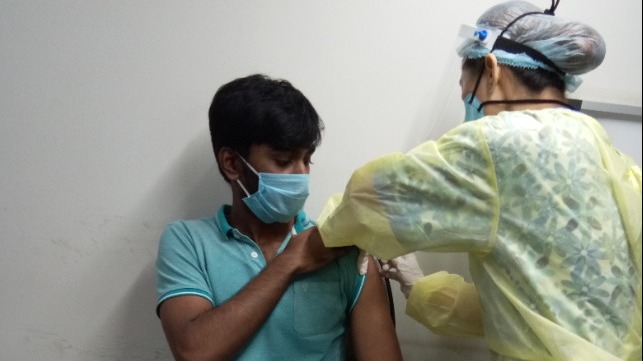Crew Change Crisis Stabilizes as Vaccination Rates Rise

There are possibly some signs of improvement in the challenges seafarers have encountered due to the pandemic. Unions, shipping lines, and major shipping organizations have complained for more than a year of a crew crisis as seafarers were unable to travel to and from their ships finding themselves unable to go home or reach their ships to relieve crews that had been at sea beyond their contracts.
The latest monthly update of the Neptune Declaration Crew Change Indicator, which is assembled from data supplied by the major ship managers, shows the first month of stabilization. Launched in May, the indicator tracks both crew nearing the end of their contracts as well as crew overdue for leave. In August, both numbers stabilized and show slight declines after monthly increases since the indicator was launched. Travel restrictions, flight cancellations, and domestic lockdowns continue to create problems for seafarers, but the organizer said there “could be a light at the end of the tunnel.”
“The September Indicator confirms the tendency from August that the situation may be stabilizing,” reported the Global Maritime Forum, an international not-for-profit organization that oversees the reporting. After more than one-and-a-half percentage point increases in both the June and July reports, the indicator shows a tenth of a percentage point decline for the number of seafarers aboard ships beyond the expiration of their contracts. There was a similar decline in the number of seafarers nearing the end of their contracts.
Ship managers report for the first time that they are facing a shortage of seafarers and cite travel restrictions for Indian seafarers and the European summer holiday period as causes. Still, governments and ports are placing stricter crew change requirements which have resulted in the cancellation of crew changes.
The September Indicator also reports a strong increase in the number of seafarers receiving COVID-19 vaccinations. According to the Global Maritime Forum, the new numbers suggest that programs set up to offer vaccines to international seafarers, especially in the U.S. and some European countries, are starting to produce results. While vaccination rates still age global average, more than one-in-five seafarers are now vaccinated up from one-on-seven a month earlier.
“It is very encouraging to see that the number of seafarers who have been vaccinated has increased by 6.6 percentage points in the last month,” says Kasper Søgaard, Managing Director, Head of Institutional Strategy and Development, Global Maritime Forum. “But there is room for improvement. Vaccination rates remain behind large shipping nations in Europe, North America, and Asia where more than 50 percent of the population is fully vaccinated.”
Despite the progress in seafarer vaccinations, ship managers highlighted that there continues to be limited access to Covid-19 vaccines for seafarers due to supply issues. Furthermore, ensuring access to the second dose of the vaccine remains a challenge and, in many cases, there is a significant gap between the two doses for seafarers. Ship managers also report reluctance by some seafarers to get vaccinated.

that matters most
Get the latest maritime news delivered to your inbox daily.
More countries however continue to join those offering vaccinations. Earlier this week, Singapore announced it would begin vaccinating foreign seafarers who are staying in the country for a month or longer as part of their work. Similarly, the Australian state of Queensland has become the first in the country to begin offering vaccinations to foreign crews during their port calls.
While many countries have yet to recognize seafarers as key workers, the organizers of the report are optimistic that progress might be happening to protect the welfare and rights of seafarers.
